Overview Metabolic Syndrome and vitamin D
Metabolic Syndrome category has the following
{include}
WikiPedia Metabolic Syndrome
Metabolic syndrome is a combination of medical disorders that, when occurring together, increase the risk of developing cardiovascular disease and diabetes
It affects one in five people in the United States and prevalence increases with age.
Some studies have shown the prevalence in the USA to be an estimated 25% of the population
Many different definitions of Metabolic Syndrome
{which include some combination of Diabetes, obesity, hypertension, Elevated triglycerides, High-sensitivity, C-reactive protein, Reduced HDL cholesterol}
See also VitaminDWiki
Metabolic Syndrome and Vitamin D - review of 33 studies - March 2021
Metabolic Syndrome indicators inversely proportional to vitamin D below 46 ng – Nov 2018
Metabolic Syndrome among obese 4X more likely if low vitamin D – July 2013
Metabolic Syndrome 70 percent more likely if vitamin D insufficient - March 2012
Metabolic Syndrome reduced 2X after one year of more sunlight - Nov 2011
Waist size reduced 3 cm by Vitamin D in those with Metabolic Syndrome – Jan 2017
Hypothesis- Metabolic disease is due to Tissue Renin-Angiotensin Systems – Feb 2014
Sudden death 6X more likely with Metabolic Syndrome and low vitamin D - March 2012
Vitamin D and metabolic syndrome - April 2012 need more vitamin D
Metabolic Syndrome in children is associated with low vitamin D – review Jan 2013
Fatty liver disease (NAFLD), metabolic syndrome, and perhaps vitamin D – June 2013
Metabolic Syndrome 3X less likely in college students with enough vitamin D – June 2014
Metabolism and Inflammation are also regulated by Vitamin D – 2014
Metabolic Syndrome risk decreases 12 percent with 150 mg of Magnesium – meta-analysis Dec 2014
Vitamin D measurements, Vit D Binding Protein, and Metabolic Syndrome - June 2017
Impact of 25-hydroxyvitamin D, free and bioavailable fractions of vitamin D, and vitamin D binding protein levels on metabolic syndrome components.
Arch Med Sci. 2017 Jun;13(4):745-752. doi: 10.5114/aoms.2016.58594. Epub 2016 Mar 16.
Pelczyńska M1, Grzelak T1, Sperling M1, Bogdański P2, Pupek-Musialik D3, Czyżewska K1.
INTRODUCTION:
Various forms of vitamin D and factors involved in their metabolism can play a role in the etiopathogenesis of metabolic disorders. This paper aims to define the relationship between concentration of the hydroxylated form of vitamin D (25(OH)D), the fraction of free and bioavailable vitamin D, and of vitamin D binding protein (VDBP) levels on the one hand and the prevalence of metabolic syndrome components on the other.
MATERIAL AND METHODS:
The studies were conducted on 79 people, including 52 with metabolic syndrome (MetS+) and 27 without it (MetS-). Biochemical measurements (lipid profile, glycemia, 25(OH)D, VDBP, albumin, calcium, parathyroid hormone) were performed, concentration of free and bioavailable vitamin D was mathematically calculated, and anthropometric and blood pressure measurements were taken.
RESULTS:
The mean ± SD concentration of 25(OH)D among MetS+ individuals (41.90 ±13.12 nmol/l) was lower (p < 0.0001) than among the MetS- group (66.09 ±18.02 nmol/l). Differences between groups were observed in relation to medians/means of concentrations of free and bioavailable vitamin D (p < 0.0001) but not in the case of VDBP. In the entire study population, 25(OH)D correlated with all metabolic syndrome components, whereas its free and bioavailable fraction correlated with particular components of the syndrome. In the MetS+ group, VDBP concentration negatively correlated with body mass index (p = 0.037) and levels of diastolic pressure (p = 0.022). In the case of the MetS- group, the free fraction of vitamin D negatively correlated with triglyceridemia (p = 0.049).
CONCLUSIONS:
The evaluation of various forms of vitamin D and VDBP in different population groups seems to have significant clinical value in evaluating the prevalence of metabolic disorders.
📄 Download the PDF from VitaminDWiki
See also Clinical Trials for Metabolic Syndrome
Metabolic Syndrome and Vitamin D Intervention 35 as of Aug 2021
Vitamin D and Glucose Metabolism in Pediatrics 3,000 IU vitamin D
Metabolic Syndrome 13% more likely for each 10 ng decrease in vitamin D - meta-analysis - March 2014
Blood vitamin D status and metabolic syndrome in the general adult population: a dose-response meta-analysis.
J Clin Endocrinol Metab. 2014 Mar;99(3):1053-63. doi: 10.1210/jc.2013-3577. Epub 2013 Jan 1.
Ju SY1, Jeong HS, Kim do H.
1Department of Family Medicine (S.Y.J.), Yeouido St Mary's Hospital, College of Medicine, The Catholic University of Korea, Seoul 150-713, Korea; Department of Preventive Medicine (H.S.J.), Seoul St Mary's Hospital, College of Medicine, The Catholic University of Korea, Seoul 137-701, Korea; and Department of Family Medicine (D.H.K.), Korea University Ansan Hospital, Korea University College of Medicine, Seoul 136-705, Korea.
CONTEXT: Increasing evidence has suggested an association between blood vitamin D levels and metabolic syndrome.
OBJECTIVE: Our objective was to determine the relationship between blood vitamin D status and metabolic syndrome in the general adult population, using a dose-response meta-analysis.
DATA SOURCE: We searched the PubMed, EMBASE, Web of Science, and Cochrane Library databases through July 2013 to identify relevant studies.
STUDY SELECTION: Observational studies, reporting risk ratios with a 95% confidence interval (CI) for metabolic syndrome in ≥3 categories of blood 25-hydroxyvitamin D [25(OH)D] levels, were selected.
DATA EXTRACTION: Data extraction was performed independently by 2 authors, and the quality of the studies was evaluated using the risk of bias assessment tool for nonrandomized studies.
DATA SYNTHESIS: The pooled odds ratio of metabolic syndrome per 25 nmol/L increment in the serum/plasma 25(OH)D concentration was 0.87 (95% CI = 0.83-0.92, I(2) = 85%), based on 16 "cross-sectional studies" and 1.00 (95% CI = 0.98-1.02, I(2) = 0%) for 2 "cohort and nested case-control studies." The dose-response meta-analysis showed a generally linear, inverse relationship between 25(OH)D levels and metabolic syndrome in the cross-sectional studies (P for linear trend < .001).
CONCLUSIONS: Blood vitamin D levels were associated with a risk of metabolic syndrome in cross-sectional studies but not in longitudinal studies. Randomized, clinical trials will be necessary to address the issue of causality and to determine whether vitamin D supplementation is effective for the prevention of metabolic syndrome.
PMID: 24423309
Some PubMed items
- Effect of high-dose vitamin D supplementation on cardiometabolic risk factors in subjects with metabolic syndrome: a randomized controlled double-blind clinical trial Nov 2016
- 50,000 IU weekly for 16 weeks was not enough - everyone, even in control group, started Vitamin D deficient PDF $40
- Vitamin D Deficiency in Relation to the Risk of Metabolic Syndrome in Middle-Aged and Elderly Patients with Type 2 Diabetes Mellitus 2016
- 3.3 X more likely, free PDF online
- Association of metabolic syndrome and 25-hydroxyvitamin D with cognitive impairment among elderly Koreans July 2016
- metabolic syndrome and low Vitamin D ==> cognitive impairment 3.1 X more likely; Rent PDF from publisher for $6
- Is the Association between Vitamin D and Metabolic Syndrome Independent of Other Micronutrients July 2016
- vitamin A, zinc , and magnesium Publisher wants $28 for the PDF
- White matter microstructure and cognitive decline in metabolic syndrome: a review of diffusion tensor imaging Jan 2018
- Dietary Fiber and Metabolic Syndrome : A Meta-Analysis and Review of Related Mechanisms. Dec 2017
- 33% reduction - same as a 25 ng increase in Vitamin D (see 2014 meta-analysis above) Free PDF online
Metabolic Syndrome and Fructose - Mercola Jan 2015
I highly recommend reading Dr. Richard Johnson's book The Fat Switch (2012)
Johnson: metabolic syndrome really should be called the fat-storage condition, because it’s just fat storage.
Johnson video March 2014
Humans share the genes with other animals which use fructose to store fat
However, humans lack the ability to turn off the "fat switch" (most hypernating animals)
Recommends < 25 grams of frutose, and for some people < 15 grams
Vitamin D and Metabolic Diseases: Growing Roles of Vitamin D (VDR & RXR) - Dec 2018
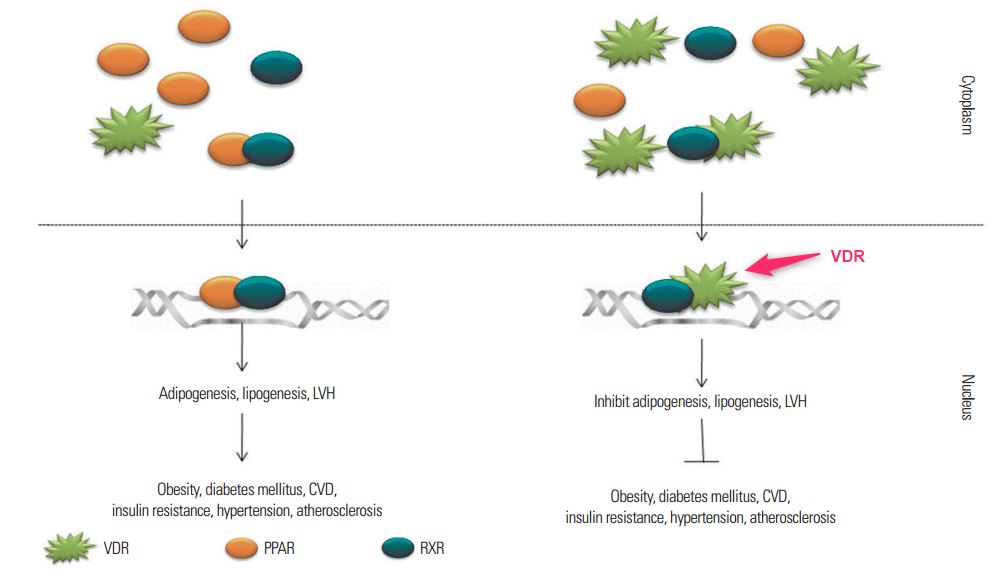
📄 Download the PDF from VitaminDWiki
Metabolic Syndrome images from web (nothing about vitamin D)
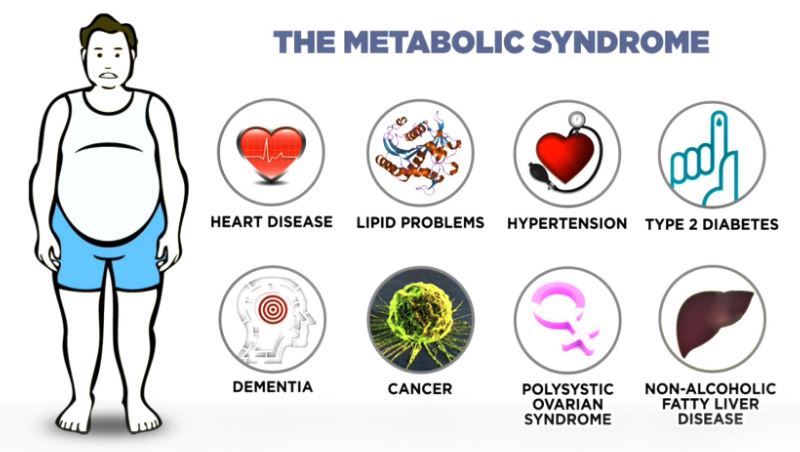
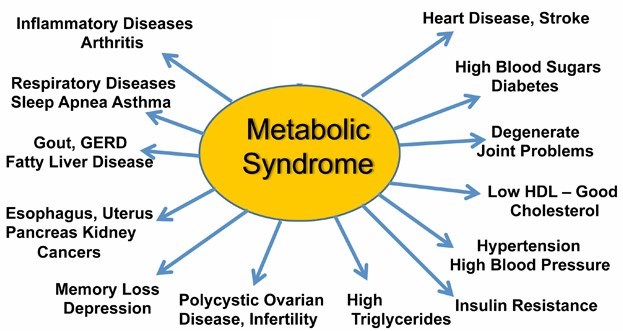
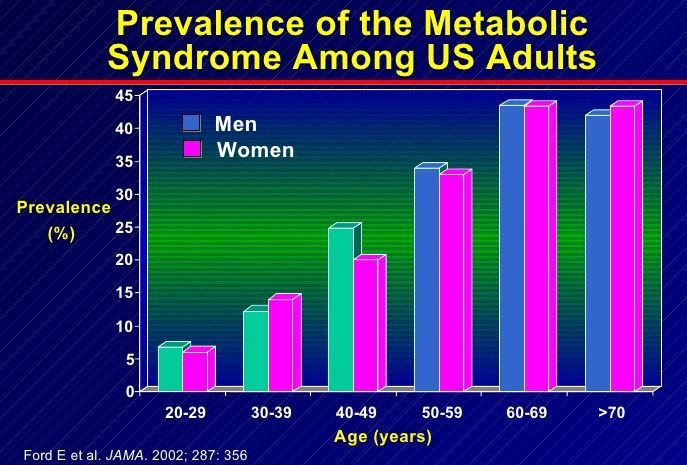
Standard weight - 3X more likely to die if also have MetS (CDC 2020)
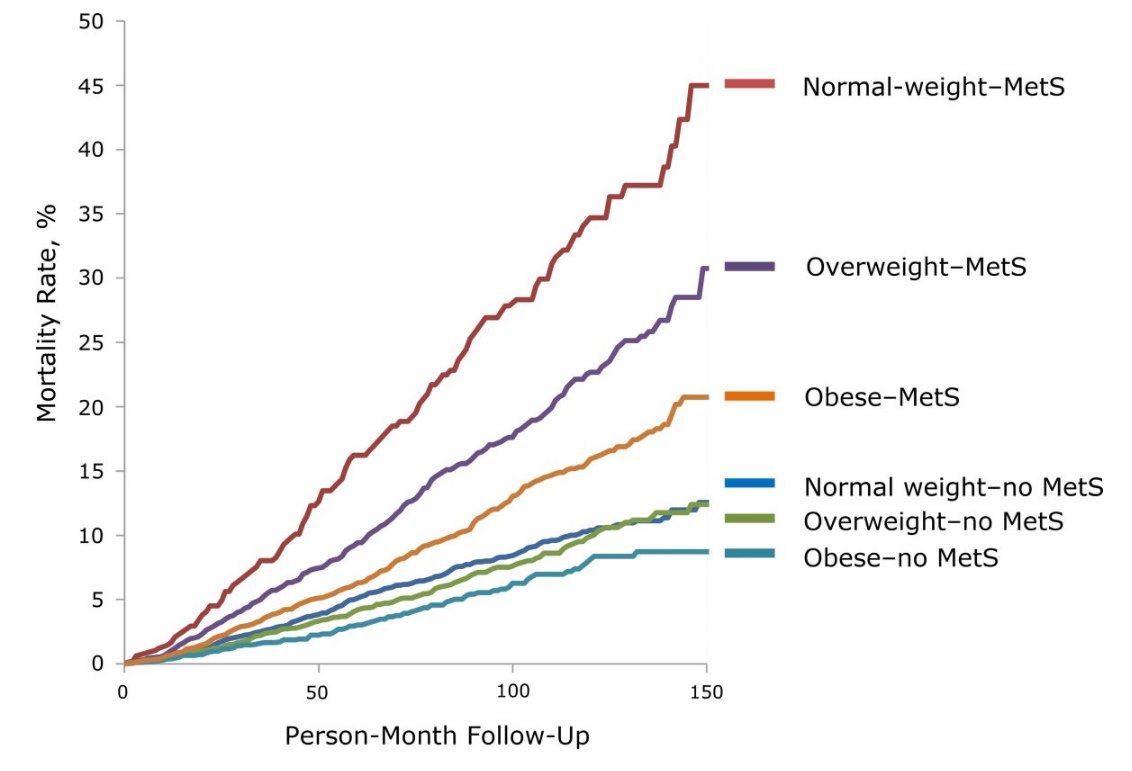
The Influence of Metabolic Syndrome in Predicting Mortality Risk Among US Adults: Importance of Metabolic Syndrome Even in Adults With Normal Weight 📄 PDF
